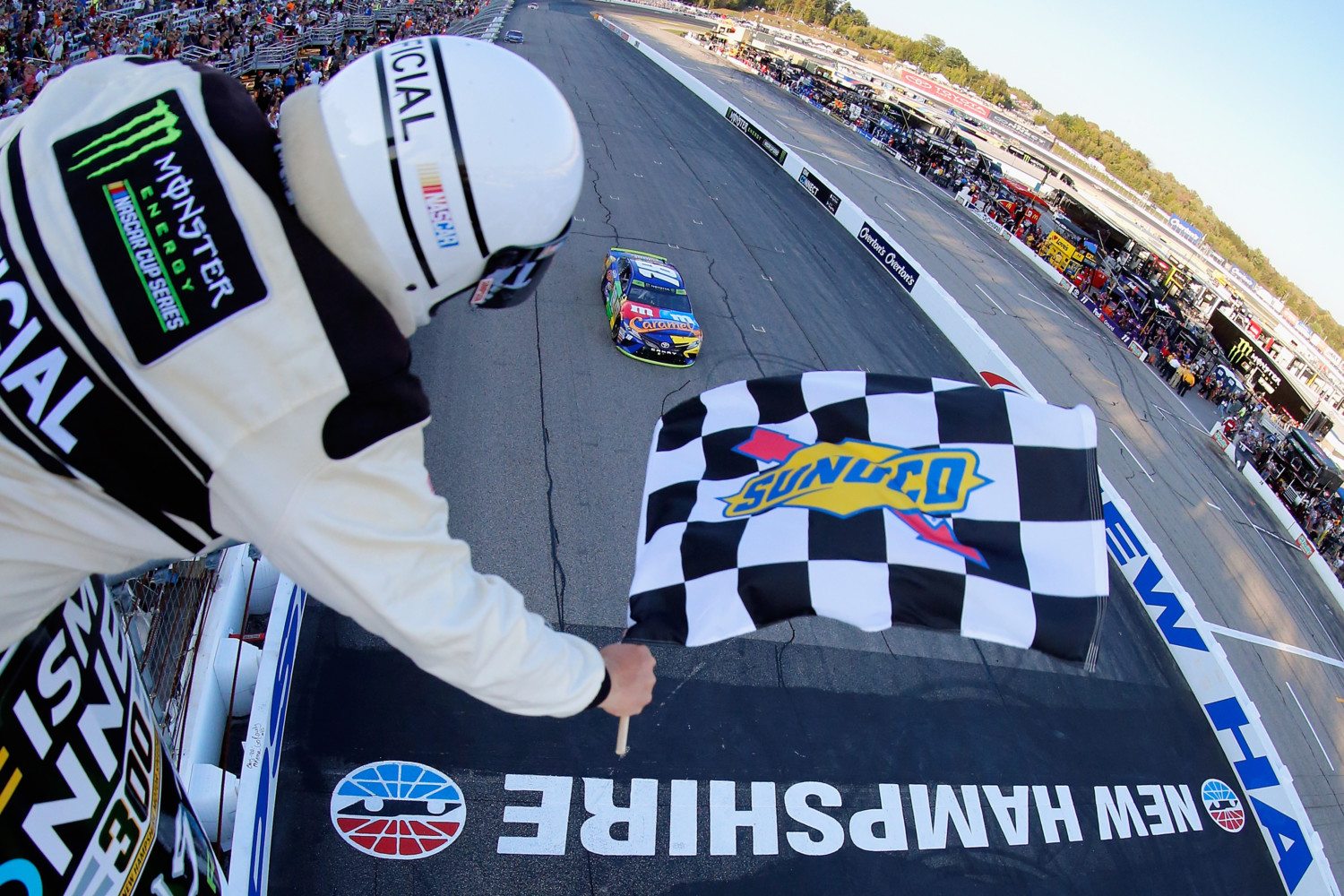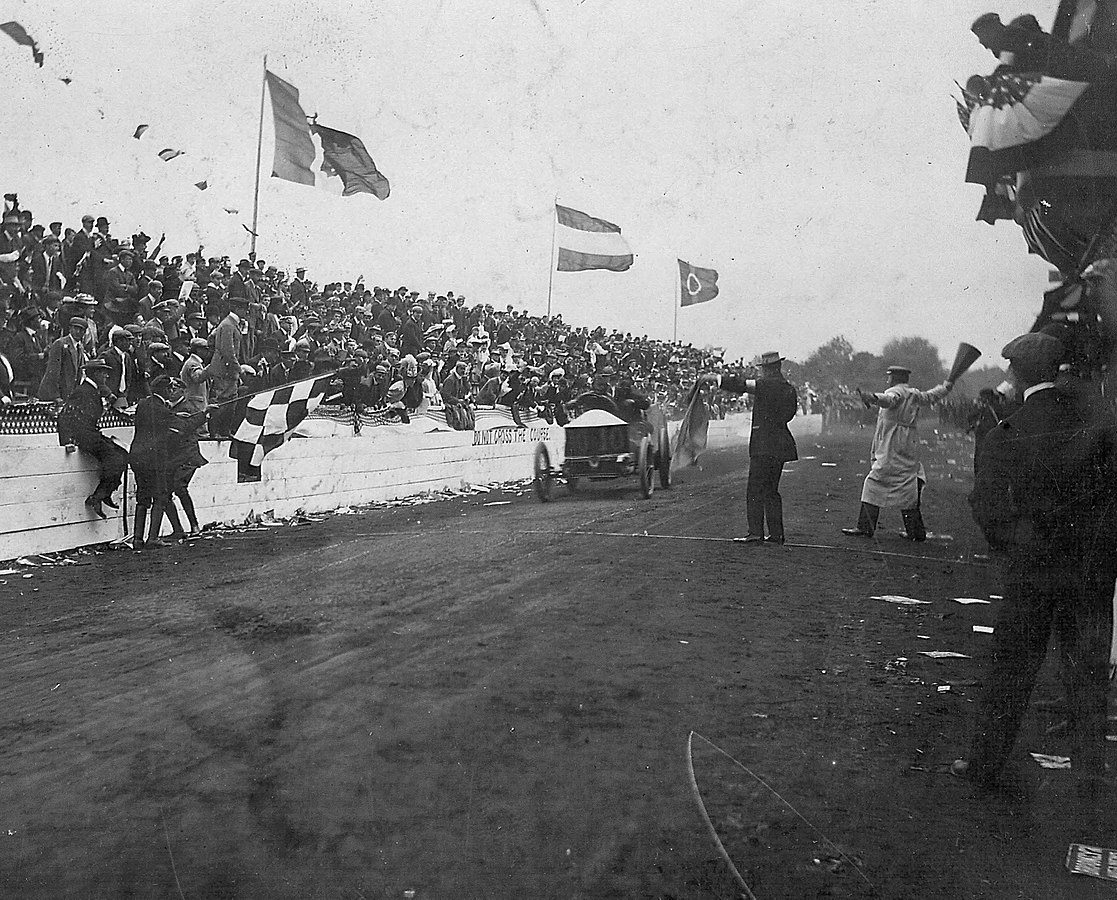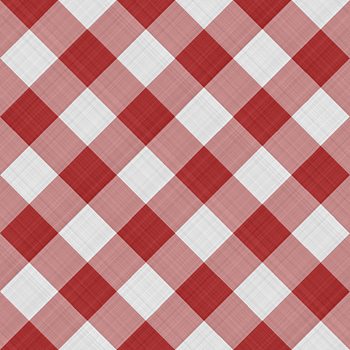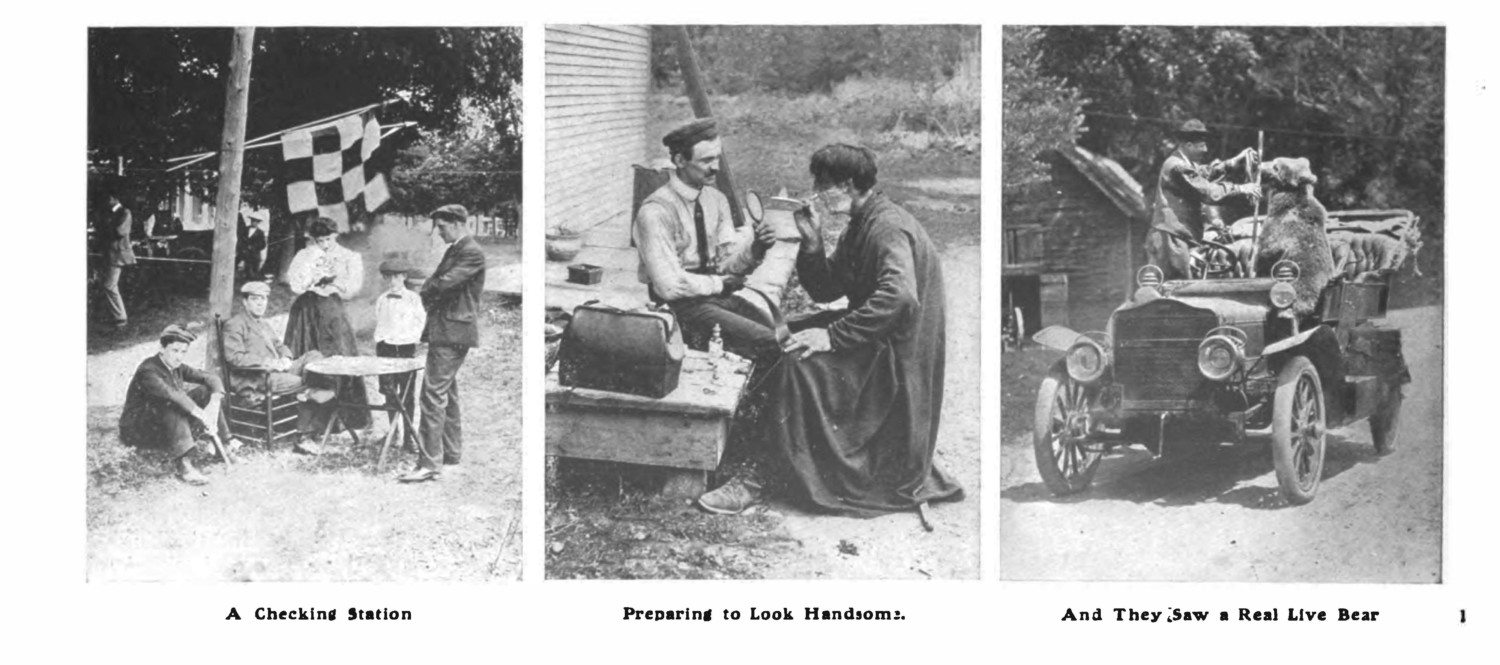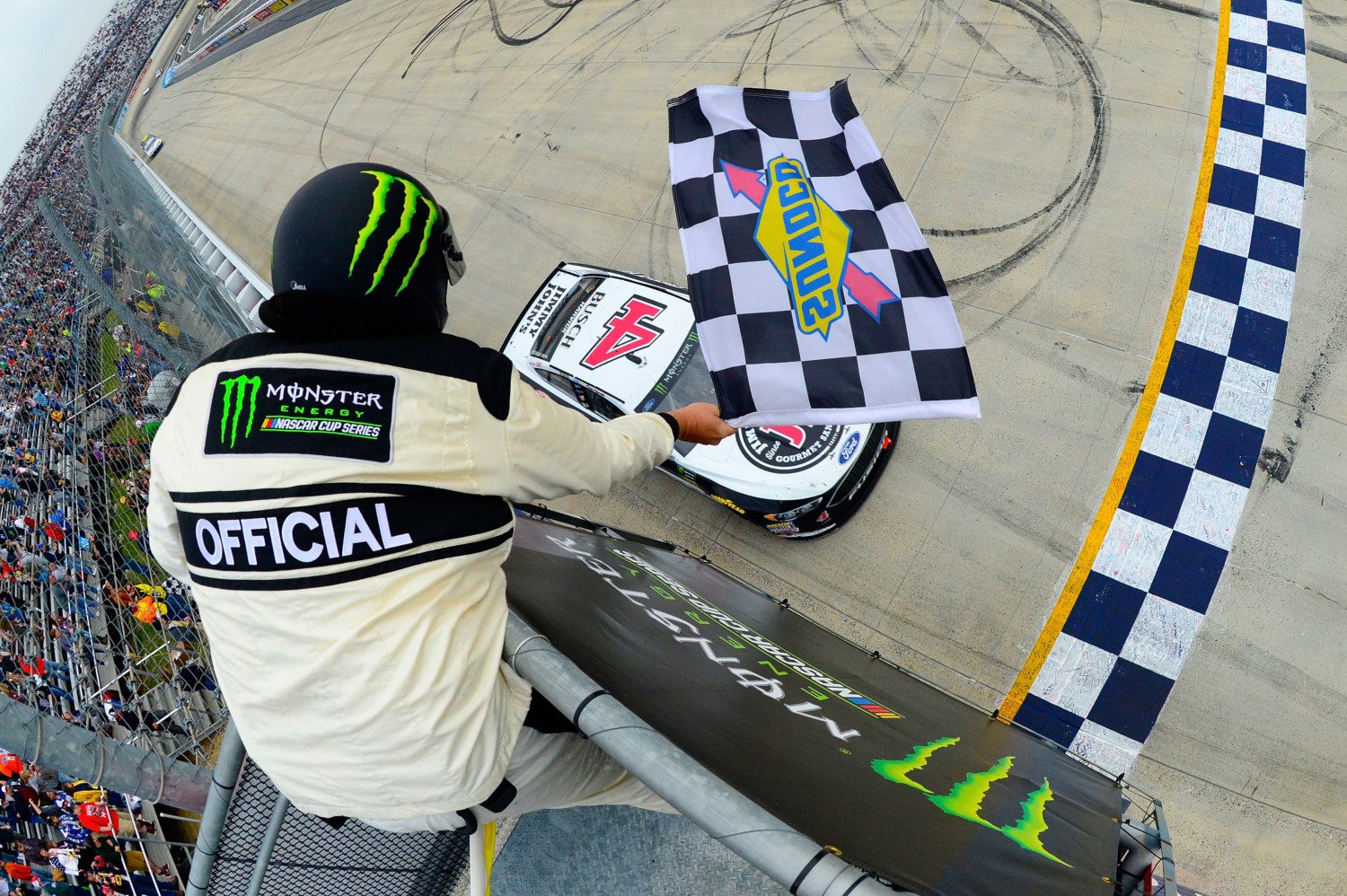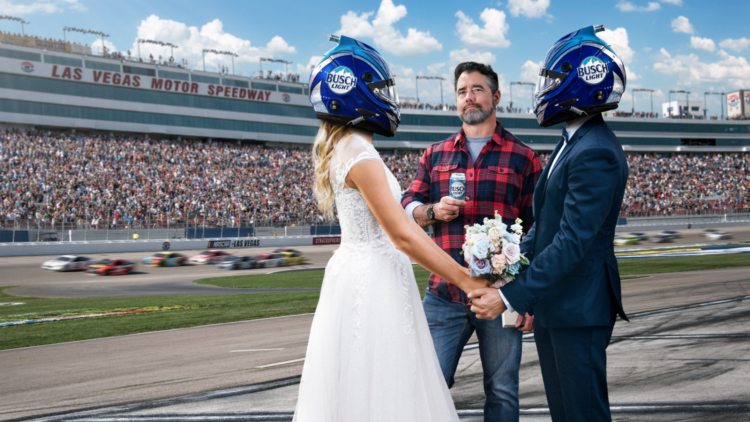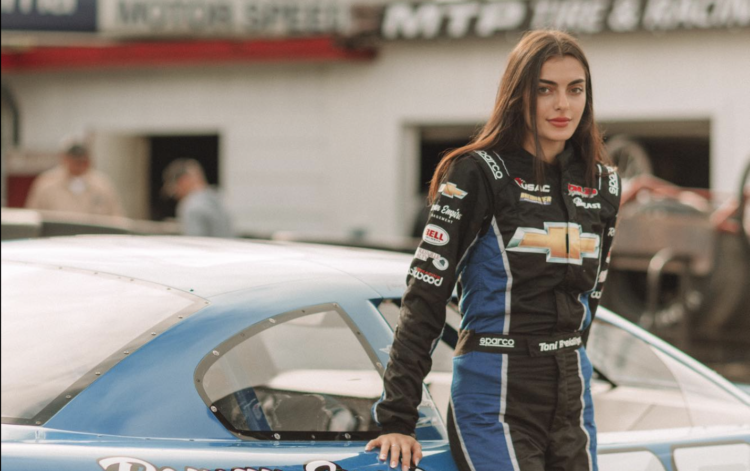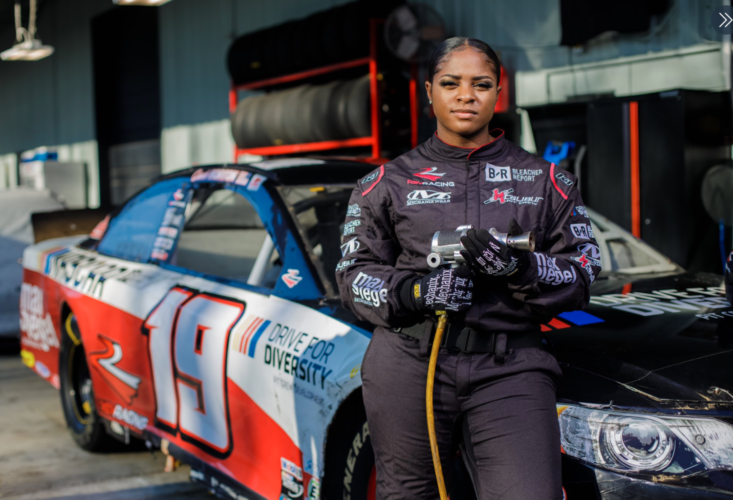Why is the checkered flag used at the end of races? Here are the best theories
The checkered flag waved at the end of an auto race is as iconic as many national flags. But trying to figure out how that black-and-white flag came to be used as the ultimate signal in racing isn’t as easy as you might think. You need to dig through several layers of myth first.
It seems the first photographic documentation of a checkered flag being used as a signal in a race is the photo below, which was taken at the 1906 Vanderbilt Cup Race in New York. The image shows official race starter Fred Wagner, at left, waving the signal for the winning driver, Louis Wagner. (The latter Wagner was driving a Darracq V8 with an average pace of 63 miles per hour on the 297.1-mile course, in case you were wondering.)
So clearly that photo proves the flag has a long history at the end of races — but it doesn’t answer how it came to be used.
People have said that the checkered flag was inspired by everything from a naval communication symbol to it being based on a pattern worn by race officials, but there hasn’t been much documentation to back those estimations up. Let’s take a look at three of the most common theories behind the origins of the checkered flag.
1. People Were Hungry
Perhaps the most satisfying folktale about the checkered or check-patterned flag is one tying it to checked picnic blankets.
“Racing at that point was done on horseback, and those at the races would typically eat together afterward,” according to NASCAR’s website. “To signal when dinner was ready and the racing should end, a tablecloth — which, during this time period, was checkered — was waved.”
NASCAR isn’t alone in crediting hunger with the advent of the flag on race days.
“Stories most often credit settlers of the American Midwest with the origin of the checkered flag,” the racing magazine Winding Road Winding Road summarizes. “At their large public meals a briskly waved checkered tablecloth of the era signaled food was ready to be served and the horse racing competitions should come quickly to an end.”
2. The Pattern Stood Out
Another very common theory? The checkerboard pattern could be easier seen than other patterns for drivers who were kicking up dirt on dusty roads.
NASCAR has pushed that “less romantic” theory as well, stating that the checkered flag may have been used when “visibility was incredibly limited” due to dust and dirt being thrown in the air.
Check out some footage of the 1906 Vanderbilt Cup Race to get an idea of how bad the visibility could be on those old tracks, especially at the 0:36 mark.
3. A Play On Words
But if you want the best-researched origin story of the checkered flag, you need to go with the “visual pun” theory. In his book “Origin of the Check Flag: A Search for Racing’s Holy Grail,” Fred R. Egloff traces the racing connection of the iconic flag back to early 1900s America, which is backed up by the aforementioned Vanderbilt Cup photo.
The American Automobile Association (AAA) sponsored an endurance race called the Glidden Tour between 1904 and 1913. During the July 1906 Glidden Tour between Buffalo, New York, and Bretton Woods, New Hampshire, drivers had to stop about every 25 miles at checkpoints where a person called a “checker” made sure they were accounted for and following the course rules.
These stops were marked with a black-and-white “checkered” flag! See below left for a photo that was taken about four months before the Vanderbilt Cup race.
“The controls were reached ahead of time and the cars laid up at the road side to await their time to pass the checker whose stand was marked by a checkered flag,” an August 1906 report from Motor magazine stated.
So there you have it. Those iconic checkered flags were reportedly first used in the Glidden Tour race of 1906 and were first seen at the end of a race during the Vanderbilt Cup race later that year. Today, the checkered flag is as tied to auto racing as the cars themselves!
What’s your favorite theory as to why the checkered flag came to be?


